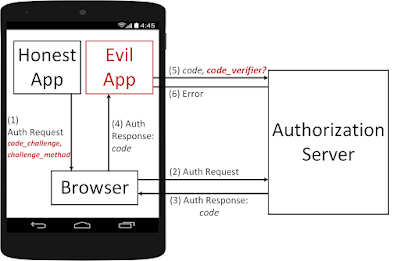Passwords are the key element of information require to access the system. Similarly, the first step is to access the system is that you should know how to crack the password of the target system. There is a fact that users selects passwords that are easy to guess. Once a password is guessed or cracked, it can be the launching point for escalating privileges, executing applications, hiding files, and covering tracks. If guessing a password fails, then passwords may be cracked manually or with automated tools such as a dictionary or brute-force method.
Cracking a Password
Passwords are stored in the Security Accounts Manager (SAM) file on a Windows system and in a password shadow file on a Linux system.
Manual password cracking involves attempting to log on with different passwords. The hacker follows these steps:
- Find a valid user account (such as Administrator or Guest).
- Create a list of possible passwords.
- Rank the passwords from high to low probability.
- Key in each password.
- Try again until a successful password is found.
A more efficient way of cracking a password is to gain access to the password file on a system. Most systems hash (one-way encrypt) a password for storage on a system. During the logon process, the password entered by the user is hashed using the same algorithm and then compared to the hashed passwords stored in the file. A hacker can attempt to gain access to the hashing algorithm stored on the server instead of trying to guess or otherwise identify the password. If the hacker is successful, they can decrypt the passwords stored on the server.
Understanding the LAN Manager Hash
Windows 2000 uses NT LAN Manager (NTLM) hashing to secure passwords in transit on the network. Depending on the password, NTLM hashing can be weak and easy to break. For example, let's say that the password is 123456abcdef . When this password is encrypted with the NTLM algorithm, it's first converted to all uppercase: 123456ABCDEF . The password is padded with null (blank) characters to make it 14 characters long: 123456ABCDEF__ . Before the password is encrypted, the 14-character string is split in half: 123456A andBCDEF__ . Each string is individually encrypted, and the results are concatenated:
123456A = 6BF11E04AFAB197F
BCDEF__ = F1E9FFDCC75575B15
The hash is 6BF11E04AFAB197FF1E9FFDCC75575B15 .
Cracking Windows 2000 Passwords
The SAM file in Windows contains the usernames and hashed passwords. It's located in the Windows\system32\config directory. The file is locked when the operating system is running so that a hacker can't attempt to copy the file while the machine is booted to Windows.One option for copying the SAM file is to boot to an alternate operating system such as DOS or Linux with a boot CD. Alternately, the file can be copied from the repair directory. If a system administrator uses the RDISK feature of Windows to back up the system, then a compressed copy of the SAM file called SAM._ is created in C:\windows\repair . To expand this file, use the following command at the command prompt:
C:\>expand sam._ sam
After the file is uncompressed, a dictionary, hybrid, or brute-force attack can be run against the SAM file using a tool like L0phtCrack. A similar tool to L0phtcrack is Ophcrack.
Download and install ophcrack from http://ophcrack.sourceforge.net/
Redirecting the SMB Logon to the Attacker
Another way to discover passwords on a network is to redirect the Server Message Block (SMB) logon to an attacker's computer so that the passwords are sent to the hacker. In order to do this, the hacker must sniff the NTLM responses from the authentication server and trick the victim into attempting Windows authentication with the attacker's computer.A common technique is to send the victim an email message with an embedded link to a fraudulent SMB server. When the link is clicked, the user unwittingly sends their credentials over the network.
SMBRelay
An SMB server that captures usernames and password hashes from incomingSMB traffic. SMBRelay can also perform man-in-the-middle (MITM) attacks.
SMBRelay2
Similar to SMBRelay but uses NetBIOS names instead of IP addresses to capture usernames and passwords.pwdump2
A program that extracts the password hashes from a SAM file on a Windows system. The extracted password hashes can then be run through L0phtCrack to break the passwords.Samdump
Another program that extracts NTLM hashed passwords from a SAM file.C2MYAZZ
A spyware program that makes Windows clients send their passwords as clear text. It displays usernames and their passwords as users attach to server resources.NetBIOS DoS Attacks
A NetBIOS denial-of-service (DoS) attack sends a NetBIOS Name Release message to the NetBIOS Name Service on a target Windows systems and forces the system to place its name in conflict so that the name can no longer be used. This essentially blocks the client from participating in the NetBIOS network and creates a network DoS for that system.- Start with a memorable phrase, such as "Maryhadalittlelamb"
- Change every other character to uppercase, resulting in "MaRyHaDaLiTtLeLaMb"
- Change a to @ and i to 1 to yield "M@RyH@D@L1TtLeL@Mb"
- Drop every other pair to result in a secure repeatable password or "M@H@L1LeMb"
Now you have a password that meets all the requirements, yet can be "remade" if necessary.














